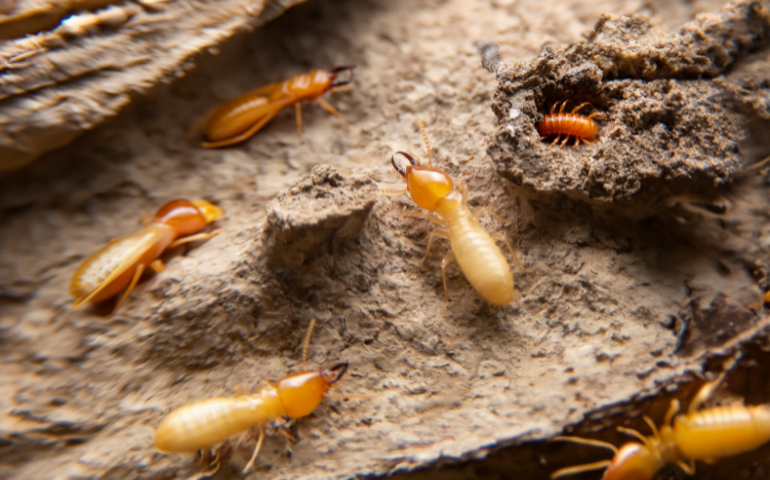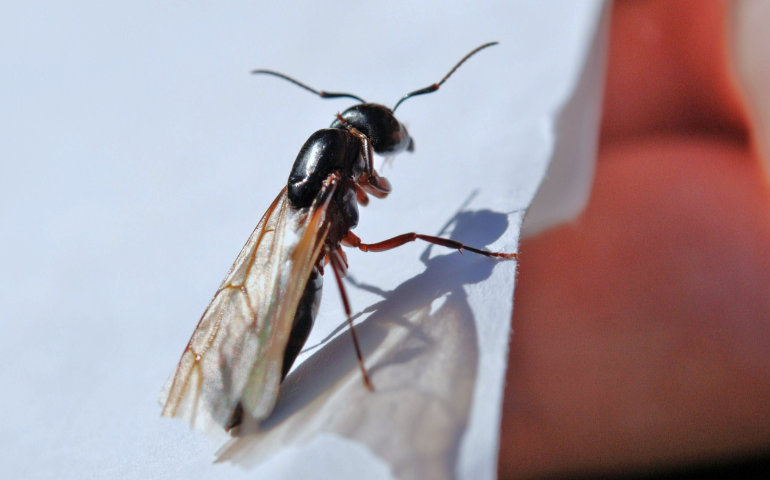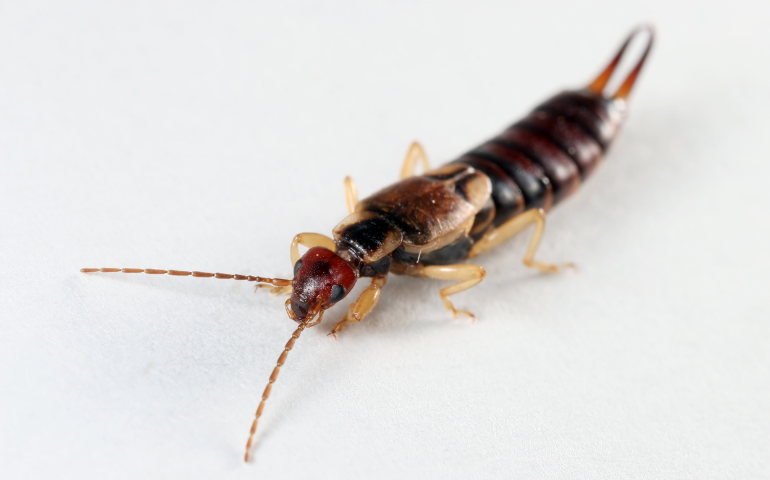What Do Termites Look Like?
At Alta Pest Control, we understand the importance of recognizing termites and distinguishing them from other insects. Here’s what termites generally look like:

Color:
Termites are typically pale or translucent, ranging from white to light brown. Worker termites may appear lighter, while reproductive termites (alates or swarmers) often have darker bodies.
Body Segmentation:
Our trained professionals recognize the soft, cylindrical body of termites divided into three segments: the head, thorax, and abdomen. Unlike ants, termites lack a noticeable constriction between the thorax and abdomen.
Antennae:
Termite antennae are straight and bead-like, a key feature for our experts to distinguish them from ants, which have an elbow-shaped bend in their antennae.
Wings (Swarmers):
Flying termites, or swarmers, have four wings of equal size, typically twice the length of their body. During their reproductive phase, swarming termites can be mistaken for flying ants.
Size:
The size of termites varies based on caste. Workers are generally smaller, while soldiers and reproductive individuals are larger. Termite workers typically measure 1/4 to 1/2 inch long.
Mouthparts:
Termites have chewing mouthparts, though not always easily visible as they are hidden within the head. This differs from ants, which have visible mandibles.
Habitat:
Termites are often associated with wood and cellulose materials, constructing mud tubes for protection and moisture retention as they move between their nest and a food source.
Social Structure:
Recognizing the social structure of termite colonies is crucial. Colonies consist of different castes, including workers, soldiers, and reproductive individuals.
7 Bugs That Look Like Termites:
Identifying termites accurately is crucial, especially when considering potential damage to wooden structures. At Alta Pest Control, we’re aware that several insects can be mistaken for termites. Here are some bugs that share a similar appearance:
Ants:
Carpenter Ants:
Carpenter ants closely resemble termites in size and color. However, ants have a distinct narrow waist, elbowed antennae, and bent antennae, unlike termites with straight waists and straight, bead-like antennae.
Flying Ants:
Winged ants and winged termites may appear similar during swarming. However, ants have elbowed antennae, a constricted waist, and forewings larger than hind wings, while termites have straight antennae, a broad waist, and wings of equal size.

Crickets:
Winged adult crickets, especially during swarming, can be mistaken for termites. Crickets, however, have long antennae and hind legs adapted for jumping.
Beetles:
Some beetles, like the powderpost beetle, can be confused with termites. Beetles have chewing mouthparts, elbowed antennae, and hardened forewings.
Booklice:
Tiny insects often found in damp environments may be mistaken for termites due to size and color. However, they have distinctive features, including a soft body, long antennae, and no constriction between the thorax and abdomen.
Earwigs:
While having a similar appearance, earwigs have pincers at the end of their abdomen, setting them apart from termites.

Mud Daubers:
Mud dauber wasps create nests that resemble termite mud tubes. However, these wasps are not termites, and their nests are typically not found on wood surfaces.
If you’re uncertain about the identification of insects in your home, our professional pest control team at Alta is ready to assist. Consulting with us ensures accurate species identification and the best course of action. Termites are a particular concern due to the potential damage they can cause to wooden structures, emphasizing the importance of early detection. Contact us today for termite control!
Share article:
